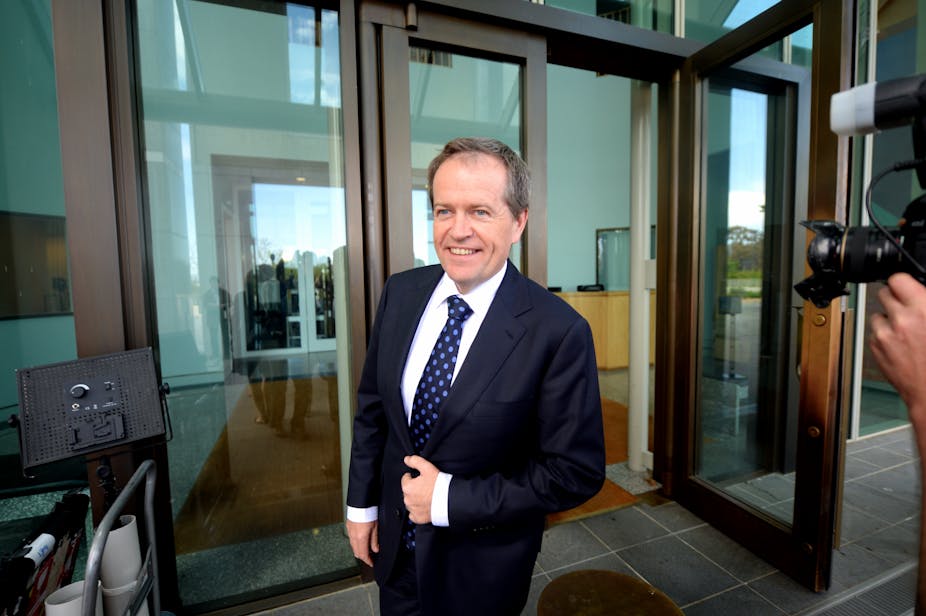So the election between two middle-aged, middle class, white men with broadly shared policy agendas is over. In this case, it is not the federal election between Kevin Rudd and Tony Abbott, but the month-long Labor leadership contest between Bill Shorten and Anthony Albanese that has finally come to a conclusion, with Shorten emerging triumphant.
In a first for the Labor Party, Shorten was elected with a 50:50 weighting split between the parliamentary party and the rank and file membership. Despite losing the rank and file vote to Albanese (polling just 40.08% of over 30,000 members’ votes), Shorten won 63.95% of his caucus colleagues’ support for a total of 52.02% overall.
For Labor, this has been largely a therapeutic exercise. Not since the 2010 National Review - undertaken by party elders Bob Carr, Steve Bracks and John Faulkner - has the party membership’s views been given so much weight. Perhaps not since Simon Crean’s internal reforms has the party membership been taken as seriously by the leadership.
Yet for all the boldness of the new election process, this is something of a missed opportunity for the ALP. In a strategic bid to bury internal divisions, both candidates claimed similar ideological ground. A more open competition might have helped the party renew further.
A wider contest might also have been a battle of ideas, not just a demonstration of leadership skills. Chris Bowen, the interim leader since the election, is a noted social liberal, and his recent book argues Labor should reclaim this tradition. In contrast, former prime ministers Julia Gillard and Kevin Rudd oscillated between Labor’s labourist and social democratic traditions.
It would have been interesting to speculate on how former ministers Greg Combet and Nicola Roxon might have enlivened this debate - although both have now left parliament.
Regardless of the result, Labor will be pleased with the process. Drawing upon wider research, British political scientist Tim Bale notes in his book - The Conservatives Since 1945: The Drivers of Party Change - that opposition parties need to do several things to get elected. Freshening the leadership and maintaining party unity and discipline are crucial to the process of renewal. To some extent, the ALP is extracting the poison of its previous leadership problems.
The ALP is often a late adopter of reform processes. It is the latest of a number of parties to “democratise” its selection processes. Following the 2010 election debacle, the British Labour Party elected Ed Miliband through a new process. The electoral college was split three ways between MPs, individual members of trade unions, and party members. Effectively, the reforms ended the trade union “bloc” vote in the British Labour Party. Rudd, in reforming the ALP, just cut them loose.
In the UK contest, while neither Andy Burnham or Diane Abbott (for example) had much chance of winning, they did enrich the policy debate. British Labour was both tormented and tantalised by Tony Blair’s “New Labour” and the “coronation” of Gordon Brown. So, the new leadership process was also a healing one - except perhaps for David Miliband, who was narrowly defeated by his brother.
Across the Tasman, New Zealand Labour has yet to find a worthy successor to Helen Clark. In 2012, it reformed its leadership rules to enable the rank and file to vote. On a version of UK Labour’s electoral college, David Cunliffe was elected party leader, on a vote split between the party caucus (40%), party members (40%) and trade unions (20%).
The Canadian centre-left New Democratic party has also reformed its leadership structures. At its 2003 leadership contest, party members were given a 75% weighting, while trade unions were given 25% (in effect, a “bloc” vote). In 2006, the party shifted to a one-person one-vote process for party members, with Tom Mulcair winning the leadership under this method in 2012.
In the case of the traditional western European social democratic parties - and unlike the Labour parties - trade unions and other affiliates are not usually given formal power in internal structures.
In Germany, the Social Democratic Party (SPD) elected its leader through the national assembly. Peer Steinbrück secured a huge 93% of the vote, but still failed to topple Angela Merkel’s Christian Democrats at the recent election.
Stefan Löfven, the current opposition leader of the Swedish Social Democratic Party (SAP) was elected through the party room. Current Danish prime minister Helle Thorning-Schmidt won the leadership of the Social Democrats through the support of party members in 2005. Austrian chancellor Werner Faymann and Social Democratic Party (SPÖ) leader recently retained office in a “grand coalition” at last month’s election. Faymann was elected through the party convention.

Local context is crucial to understanding leadership change, but all the major political parties are suffering from declining membership. While the ALP might be buoyed by the apparent influx of 4000 new members, this might prove to be a short-term boost. Current British Labour leader Ed Milband enjoyed a surge in membership, which then shrunk - as did membership under Tony Blair.
In presidential France and the US, there is a strong tradition of primaries, which enable both party and public to get a good look at the candidates. Of these, failed presidential contender Ségolène Royal tried to make participatory democracy a key party of her appeal in the lead-up to the 2007 French presidential election. Royal, like US president Barack Obama, was an innovator in e-campaigning to find new sources of support.
In this context, Bill Shorten might do well to continue the reform process of the ALP. In “playing safe” with democracy, it might spur a further appetite for democratic reform. And all Australians, not just ALP members, might appreciate that.

